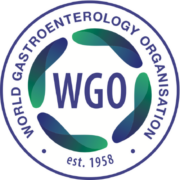New global guidelines for probiotics and prebiotics for gut health and disease
By Mary Ellen Sanders, PhD, Executive Science Officer, ISAPP
The use of probiotics and prebiotics in the practice of gastroenterology must be guided by evidence – and with new evidence continually emerging, clinicians can benefit from efforts to summarize this evidence and determine how it applies in clinical practice.
In February 2023, the World Gastroenterology Organisation provided an updated resource in this area, titled “WGO Practice Guideline. Probiotics and Prebiotics”. This project was led by Prof. Francisco Guarner MD PhD, a clinical gastroenterologist and clinical researcher in probiotics and prebiotics, and brought together experts in gastroenterology, pediatrics, family medicine, probiotics, and prebiotics. Prof. Hania Szajewska MD PhD, a clinical pediatrician and clinical researcher in probiotics from the Medical University of Warsaw, was integral to assessing evidence for pediatric populations for the guidelines. Mary Ellen Sanders PhD co-chaired the project.
For 2023 update, 800 bibliographical entries of papers published in the 2017-2021 period were scrutinized. The review team adopted the guidelines for evaluation of probiotics established by FAO/WHO experts in 2002, where at least one double blind, randomized, placebo-controlled human trial with appropriate sample size and primary outcome is required to determine if the tested product is efficacious, and qualifies as a probiotic.
ISAPP was well-represented among the experts involved on the project, as four current board members contributed. In addition to Sanders and Szajewska, Prof. Dan Merenstein MD (current ISAPP president) and Prof. Seppo Salminen PhD (current past president) populated the team.
The Guideline is intended to provide specific information on interventions that may have benefit for indicated conditions. Recommendations included probiotics or prebiotics found in at least one randomized, controlled trial showing benefit. Trials that did not show benefit were not included. The Guideline serves an important role in informing gastroenterologists around the world, especially in regions where product availability might be limited. Especially useful are Tables 8 and 9, which summarize evidence for adult and pediatric uses, respectively.
Guarner states, “We hope our WGO guideline will assist doctors, pharmacists, dietitians and other healthcare professionals all around the world to integrate probiotics and prebiotics in an evidence-based manner into their daily work of patient care.”
The Guideline provides text that introduces current understanding of probiotics and prebiotics and then comprehensively evaluates the evidence for gastrointestinal conditions. Evidence is graded from 1-3, with Level 1 referring to evidence supported by systematic review of randomized trials, Level 2 supported by randomized trials with consistent effect, without systematic review, and Level 3, supported by a single randomized controlled trial, as per the Oxford Centre for Evidence-Based Medicine.
The 2017 iteration of these guidelines was available in six languages (English, French, Portuguese, Mandarin, Russian and Spanish). This guideline is the most accessed guideline title on the WGO website, accounting for nearly one-quarter of all visits to the site. The 2023 version is only available in English so far, but translations are underway.
Clinical conditions for which some evidence was found include:
- Diarrheal conditions: acute, antibiotic-associated, difficile-associated, radiotherapy-associated, enteral nutrition-associated, nosocomial,
- Diverticular disease
- Functional abdominal pain
- Functional constipation
- Insulin resistance
- Health-related quality of life
- Helicobacter pylori infection
- Hepatic encephalopathy
- Infantile colic
- Inflammatory bowel disease
- Irritable bowel syndrome
- Lactose maldigestion
- Nonalcoholic fatty liver disease
- Nonalcoholic steatohepatitis
- Necrotizing enterocolitis
About WGO:
World Gastroenterology Organisation (WGO) is a federation of over 100 Member Societies and four Regional Associations of gastroenterology representing over 60,000 individual members worldwide. The WGO Guidelines Library contains practice guidelines written from a viewpoint of global applicability. The Guidelines go through a rigorous process of authoring, editing, and peer review and are as evidence based as possible.










